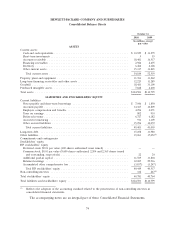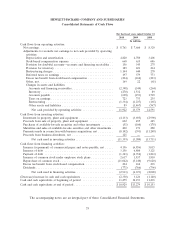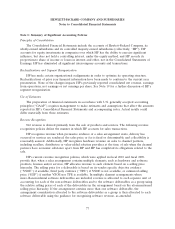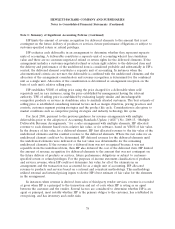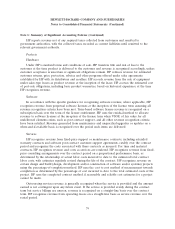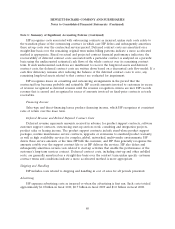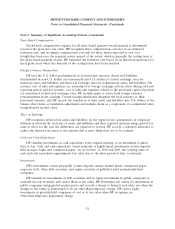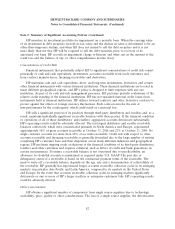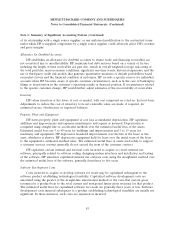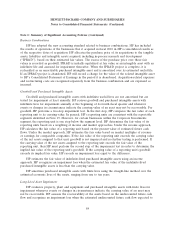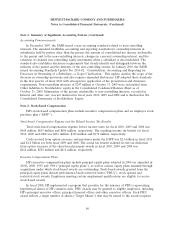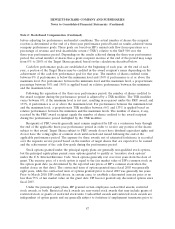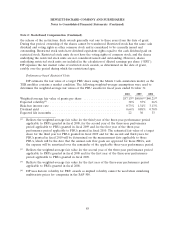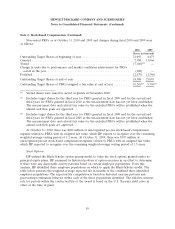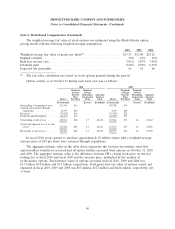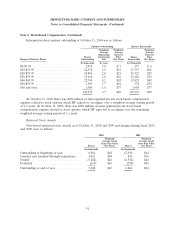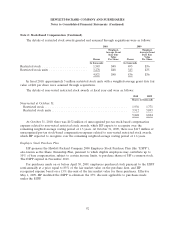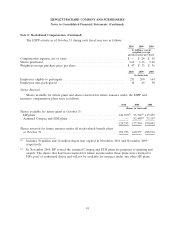HP 2010 Annual Report Download - page 91
Download and view the complete annual report
Please find page 91 of the 2010 HP annual report below. You can navigate through the pages in the report by either clicking on the pages listed below, or by using the keyword search tool below to find specific information within the annual report.HEWLETT-PACKARD COMPANY AND SUBSIDIARIES
Notes to Consolidated Financial Statements (Continued)
Note 1: Summary of Significant Accounting Policies (Continued)
of its relationship with a single source supplier, or any unilateral modification to the contractual terms
under which HP is supplied components by a single source supplier could adversely affect HP’s revenue
and gross margins.
Allowance for Doubtful Accounts
HP establishes an allowance for doubtful accounts to ensure trade and financing receivables are
not overstated due to uncollectability. HP maintains bad debt reserves based on a variety of factors,
including the length of time receivables are past due, trends in overall weighted-average risk rating of
the total portfolio, macroeconomic conditions, significant one-time events, historical experience and the
use of third-party credit risk models that generate quantitative measures of default probabilities based
on market factors and the financial condition of customers. HP records a specific reserve for individual
accounts when HP becomes aware of specific customer circumstances, such as in the case of bankruptcy
filings or deterioration in the customer’s operating results or financial position. If circumstances related
to the specific customer change, HP would further adjust estimates of the recoverability of receivables.
Inventory
HP values inventory at the lower of cost or market, with cost computed on a first-in, first-out basis.
Adjustments to reduce the cost of inventory to its net realizable value are made, if required, for
estimated excess, obsolescence or impaired balances.
Property, Plant and Equipment
HP states property, plant and equipment at cost less accumulated depreciation. HP capitalizes
additions and improvements and expenses maintenance and repairs as incurred. Depreciation is
computed using straight-line or accelerated methods over the estimated useful lives of the assets.
Estimated useful lives are 5 to 40 years for buildings and improvements and 3 to 15 years for
machinery and equipment. HP depreciates leasehold improvements over the life of the lease or the
asset, whichever is shorter. HP depreciates equipment held for lease over the initial term of the lease
to the equipment’s estimated residual value. The estimated useful lives of assets used solely to support
a customer services contract generally do not exceed the term of the customer contract.
HP capitalizes certain internal and external costs incurred to acquire or create internal use
software, principally related to software coding, designing system interfaces and installation and testing
of the software. HP amortizes capitalized internal use software costs using the straight-line method over
the estimated useful lives of the software, generally from three to five years.
Software Development Costs
Costs incurred to acquire or develop software for resale may be capitalized subsequent to the
software product establishing technological feasibility. Capitalized software development costs are
amortized using the greater of the straight-line amortization method or the ratio that current gross
revenues for a product bear to the total current and anticipated future gross revenues for that product.
The estimated useful lives for capitalized software for resale are generally three years or less. Software
development costs incurred subsequent to a product establishing technological feasibility are usually not
significant. In those instances, such costs are expensed as incurred.
83



